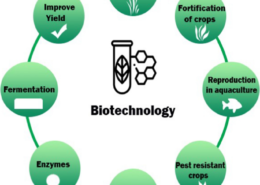Types of Biological Databases: The biological databases can be classified according to sources of data and the types of data they store. 1. classification according to source 2. classification according to the type of data they store 1. classification according to source: i) Primary Database: SourceRead more
Types of Biological Databases:
The biological databases can be classified according to sources of data and the types of data they store.
1. classification according to source
2. classification according to the type of data they store
1. classification according to source:
i) Primary Database:
Source of Data: Direct submissions of experimental data.
Examples:
GenBank: Stores raw nucleotide sequences submitted by researchers.
Protein Data Bank (PDB): Contains 3D structural data of proteins and nucleic acids derived from X-ray crystallography, NMR, and cryo-EM.
ii) Secondary database:
Source of Data: Derived or curated from primary databases.
Examples:
UniProt: Combines protein sequence data from primary databases and provides annotations about protein function, structure, and interactions.
Pfam: Contains information about protein families and domains, derived from primary sequence data.
2. classification according to the type of data they store:
Nucleotide Sequence Databases: These store sequences of DNA and RNA, which are the building blocks of life. Examples include GenBank and ENA. Think of these as libraries of genetic codes for different organisms.
Protein Sequence Databases: These contain information about proteins, which are essential molecules in cells. UniProt and PDB are key examples. They store protein sequences and structures, helping scientists understand protein functions and interactions.
Genomic Databases: These databases, like Ensembl and UCSC Genome Browser, store complete sets of genetic material (genomes) for various organisms. They include detailed maps of genes and other important regions of the genome.
Other than these biological databases mentioned above there are various different classifications of databases like according to accessibility of data some databases are private or require subscription, based on specific focus areas like Phylogenetic Databases, Taxonomy databases etc.
See less


A phylogenetic tree is a diagram that represents the evolutionary relationships among various biological species or other entities based on similarities and differences in their physical or genetic characteristics. It is a diagram, where each branch point (or node) represents the divergence of twoRead more
A phylogenetic tree is a diagram that represents the evolutionary relationships among various biological species or other entities based on similarities and differences in their physical or genetic characteristics. It is a diagram, where each branch point (or node) represents the divergence of two species or groups from a common ancestor. The tips of the branches represent the current species or groups being compared.
Components of a Phylogenetic Tree:
This are 2 types of phylogenetic tree that are:
There are various uses of phylogenetic trees like to understand evolutionary relationships between organisms, taxonomy and classification, tracing lineages
See less